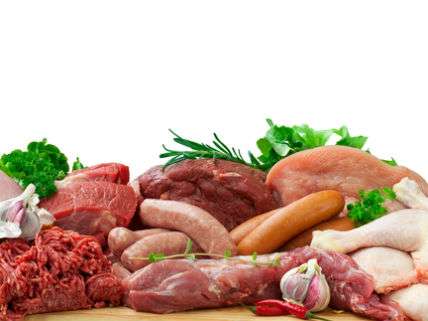Less Cropland and More Meat Eating in U.S.
New study: The Shrinking Footprint of American Meat

Meat consumption in the U.S. has grown substantially since 1969, but the amount of land devoted to growing the crops to feed cows, pigs, and chickens has dropped by nearly a third. In 1969, the average American consumed about 82, 54, and 47 pounds of beef, pork, and poultry respectively for a total of 183 pounds of meat annually. By 2016, per capita consumption of meat had risen to 213 pounds, consisting 55, 50, and 108 pounds of beef, pork, and poultry respectively. Collectively Americans ate about 15 million tons of meat in 1969 and 24 million tons in 2014. Despite the per capita increase in meat consumption along with the growth of population from 202 million to 324 million, farmers are using less cropland to grow feed for meat animals, according to Rockefeller University analysts Jesse Ausubel and Iddo Wernick in their new article, "The Shrinking Footprint of American Meat."
Ausubel and Wernick calculate that these shifts in consumption and improvements in agricultural efficiency has actually reduced the area of cropland devoted to producing animal feed since 1969 by around 9 million acres. That's an area equivalent in size to the state of Maryland. Between 1969 and 2010, they report:
Population and GDP per capita grew at annual rates averaging about positive 1% and 1.7% respectively over this period. In contrast, the same interval saw negative annual changes in the amount of meat Americans ate per dollar, the amount of grain needed to produce a unit of meat, and the amount of land needed to grow that grain. On average, between 1969 and 2010, the amount of US cropland used to grow meat fell almost 0.8% per year.
The shift in taste away from red meat toward poultry helped. By one estimate, it takes about 2.5 pounds of grain to grow one pound of chicken; 3.5 pounds for a pound of pork; and 6 pounds of feed to produce a pound of beef. Increased agricultural efficiency played a significant role too. For example, corn yields in 1969 averaged 86 bushels per acre; last year corn yields per acre averaged 171 bushels.

Show Comments (52)